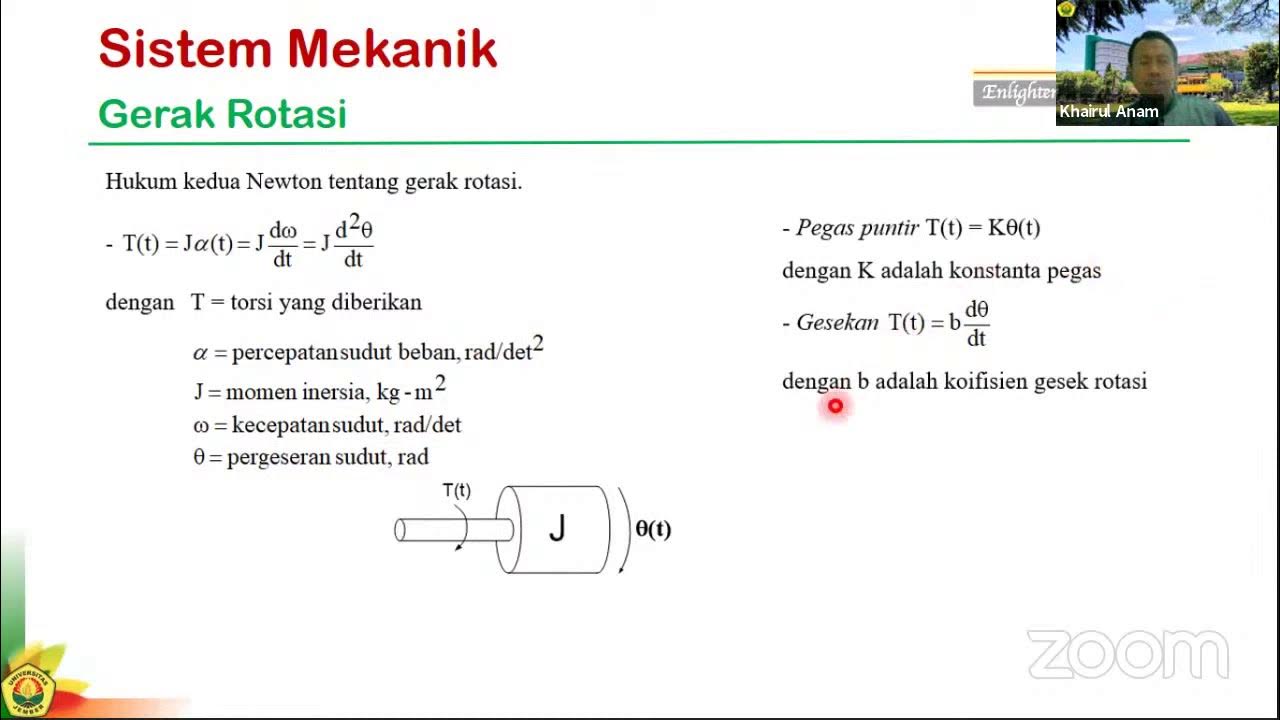Electrical Engineering: Basic Laws (18 of 31) Finding the Equivalent Resistor Ex. 3
Summary
TLDRThis video script offers a detailed tutorial on simplifying complex electrical circuits. It emphasizes the importance of redrawing circuits to clearly identify resistors in series and parallel. The presenter demonstrates how to calculate equivalent resistances using rules like the product-over-sum method for parallel resistors and the sum-over-common-denominator method for series resistors. By simplifying the circuit step-by-step, the tutorial concludes with the final equivalent resistance of the circuit, showcasing a clear and methodical approach to circuit analysis.
Takeaways
- 📝 The key to solving complex circuit problems is to redraw them in a way that makes it easier to identify resistors in series and in parallel.
- 🔧 Nodes are crucial in circuits—resistors connected to the same node can be redrawn to better visualize their connections.
- 🔍 Resistors sharing the same two nodes are in parallel, while others connected in sequence are in series.
- 🔢 Units such as ohms can be left off the schematic for clarity, but they must be included in final designs.
- 🔗 Redrawing the circuit while preserving node structure can reveal relationships between resistors more clearly.
- 📐 The script simplifies the circuit by using formulas to calculate the equivalent resistance for resistors in parallel and series.
- 🧮 The parallel resistor formula is 1/R_total = 1/R1 + 1/R2 + 1/R3 for three resistors.
- 🔄 The product-over-sum rule is used to calculate the equivalent resistance of two resistors in parallel.
- 📉 Once resistors are simplified, the circuit is redrawn with fewer resistors, making it easier to calculate the total resistance.
- ✅ The final equivalent resistance for the entire circuit is determined to be 2.795 ohms after step-by-step simplifications.
Q & A
Question 1: What is the first step to solving a complex circuit with resistors in series and parallel?
-The first step is to redraw the circuit in a way that makes it easier to identify which resistors are in series and which are in parallel. This can be done by focusing on the nodes that the resistors share.
Question 2: How does redrawing the circuit help in solving it?
-Redrawing the circuit helps by visually clarifying the relationships between resistors, making it easier to see which ones are in parallel or series. This simplifies the process of calculating equivalent resistances.
Question 3: What is the significance of identifying nodes in a circuit?
-Nodes are critical in determining how components like resistors are connected. Resistors that share common nodes are either in series or parallel, and recognizing this helps in simplifying the circuit.
Question 4: In the provided circuit, how are the three resistors (2 Ohms, 4 Ohms, and 8 Ohms) connected?
-The three resistors (2 Ohms, 4 Ohms, and 8 Ohms) are connected in parallel because they share common nodes at both ends.
Question 5: How can the equivalent resistance of resistors in parallel be calculated?
-For resistors in parallel, the equivalent resistance (R_total) is found using the formula: 1 / R_total = 1 / R1 + 1 / R2 + 1 / R3. This method sums the reciprocal of each individual resistance.
Question 6: What formula is used to find the equivalent resistance of two resistors in parallel?
-The formula for two resistors in parallel is: R_total = (R1 * R2) / (R1 + R2). This is also referred to as the product-over-sum rule.
Question 7: How does the solution proceed after simplifying the three resistors in parallel?
-After calculating the equivalent resistance for the three resistors in parallel, the circuit is redrawn with a single equivalent resistor. The remaining resistors are analyzed similarly to further simplify the circuit.
Question 8: How are the 4 Ohm and 8 Ohm resistors handled in the circuit?
-The 4 Ohm and 8 Ohm resistors are also connected in parallel. Their equivalent resistance is calculated using the product-over-sum rule: (4 * 8) / (4 + 8) = 32 / 12 = 8 / 3 Ohms.
Question 9: What is the final step to finding the total equivalent resistance of the circuit?
-The final step is to combine the remaining resistances that are in series. These resistors are added directly to find the total equivalent resistance of the entire circuit.
Question 10: What is the total equivalent resistance of the circuit after all simplifications?
-After all simplifications, the total equivalent resistance of the circuit is approximately 2.795 Ohms.
Outlines

此内容仅限付费用户访问。 请升级后访问。
立即升级Mindmap

此内容仅限付费用户访问。 请升级后访问。
立即升级Keywords

此内容仅限付费用户访问。 请升级后访问。
立即升级Highlights

此内容仅限付费用户访问。 请升级后访问。
立即升级Transcripts

此内容仅限付费用户访问。 请升级后访问。
立即升级浏览更多相关视频

Hambatan Pengganti Rangkaian Seri, Paralel Dan Campuran

Kirchhoff's Laws - How to Solve a KCL & KVL Problem - Circuit Analysis

Electrician interview questions and answers, Electrical interview basic & beginners, Electrical test

SK#2c: Pemodelan Sistem dengan Persamaan Differensial

First steps using LVSIM-EMS, an electromechanical systems simulation software

[NEW VERSION!] RANGKAIAN PARALEL DAN SERI PARALEL | Rangkaian Listik Arus Searah - Fisika Kelas 12
5.0 / 5 (0 votes)
